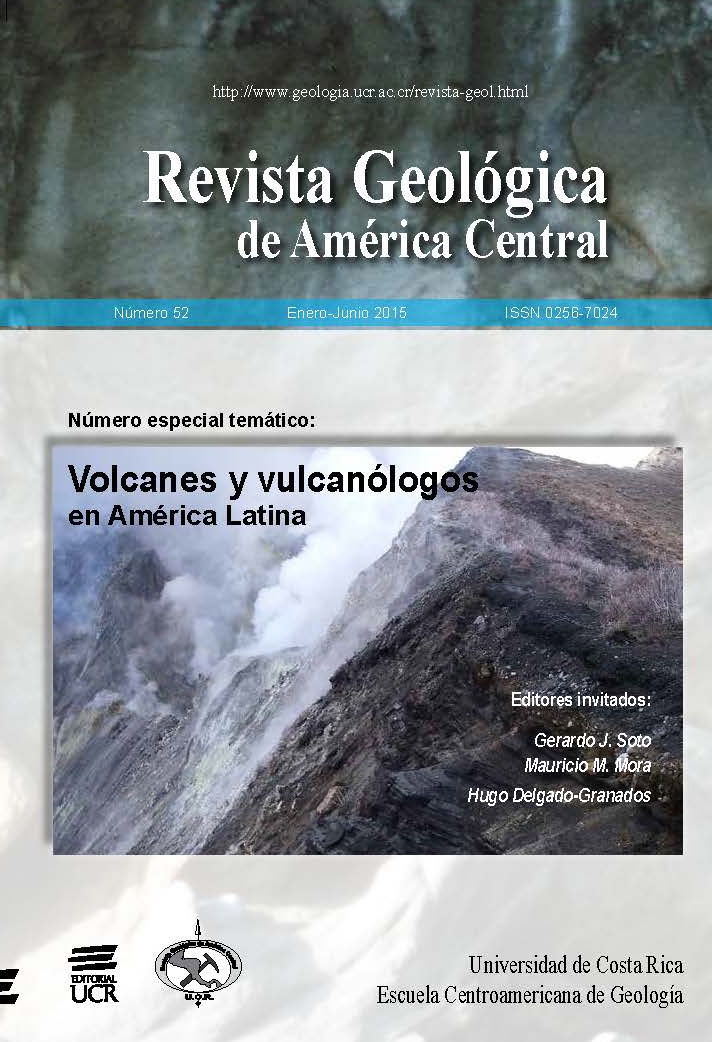Abstract
We make a comparison of the actions to reduce volcanic risk undertaken at some Latin American countries and Spain. The aim of this study is to investigate whether the socioeconomic status of a country relates to the effectiveness of volcanic risk prevention measures in use. We also aim to analyze the causes and the work methods used in order to learn about them and finally evaluate the applicability to other natural risks. We analyze these aspects according to 4 main points: 1) general knowledge about risk awareness, 2) prevention and hazard monitoring plans, 3) emergency plans and crisis management and 4) educational plans.The final comparative analysis indicates that the first point of the study is in direct proportion to the socioeconomic status of the countries, being Mexico and Spain the countries with a greater knowledge of the risk, followed by Chile, Costa Rica and Ecuador. However, this does not apply in the case of education plans, where El Salvador and Nicaragua are showing the best positions even if they have the lowest index of human development, after the United Nations.
References
BLUNDA, Y., 2006: Actualización del plan de emergencias del volcán Poás y el uso de la sismología volcánica como una herramienta preventiva.- 144 págs. Univ. de Costa Rica, San José [Tesis de Ph.D.]
BOWMAN, L. J., 2009: Community perceptions of an NGO’s impact on disaster preparedness in Los Planes de La Laguna, Santa Ana volcano, El Salvador.- 39 págs. Univ. de Michigan. [Tesis de M. Sc.]
CEPAL, 1990. Efectos socio-económicos y sociales de los desastres naturales en América Latina. Taller regional de Capacitación para el Desarrollo, Comisión Económica Para América Latina, Santiago, Chile. PNUD/UNDRO. Texto didáctico inédito, 21 págs.
DE LA CRUZ-REYNA, S., TILLING, R.I., 2008: Scientific and public responses to the ongoing volcanic crisis at Popocatépetl Volcano, Mexico: Importance of an effective hazards-warning system.- Journal of Volcanology and Geothermal Research, 170: 121-134.
GONZÁLEZ, G.C., 2009: Inmunidad compartida ante el riesgo geológico en el estado de Colima, México.- Language and Ecology, 3(2): 1-14.
INCER, J., WHEELOCK, J., CARDENAL, L., RODRÍGUEZ, A.C., 2000: Desastres naturales en Nicaragua. Guía para conocerlos y prevenirlos. Instituto para el Desarrollo y la Democracia, Nicaragua. Managua HISPAMER, 278 págs.
KERLE, N., 1996: An economic evaluation and human perspective for a moderate volcanic eruption at Arenal. -Boletín Observatorio Vulcanológico del Arenal, Ano 6 (11-12) San José, Costa Rica: 53-70.
LAVELL, A., 1997: Viviendo en riesgo. Comunidades vulnerables y prevención de desastres en América Latina. Red de Estudios Sociales en Prevención de Desastres en América Latina. 27 págs. Lima, Perú. www.desenredando.org
MARTÍ, J., ORTIZ, R., GOTTSMANN, J., GARCIA, A., DE LA CRUZ-REYNA, S., 2009: Characterizing unrest during the reawakening of the central volcanic complex on Tenerife, Canary Islands, 2004-2005, and implications for assessing hazards and risk mitigation. -Journal of Volcanology and Geothermal Research 182: 23-33.






